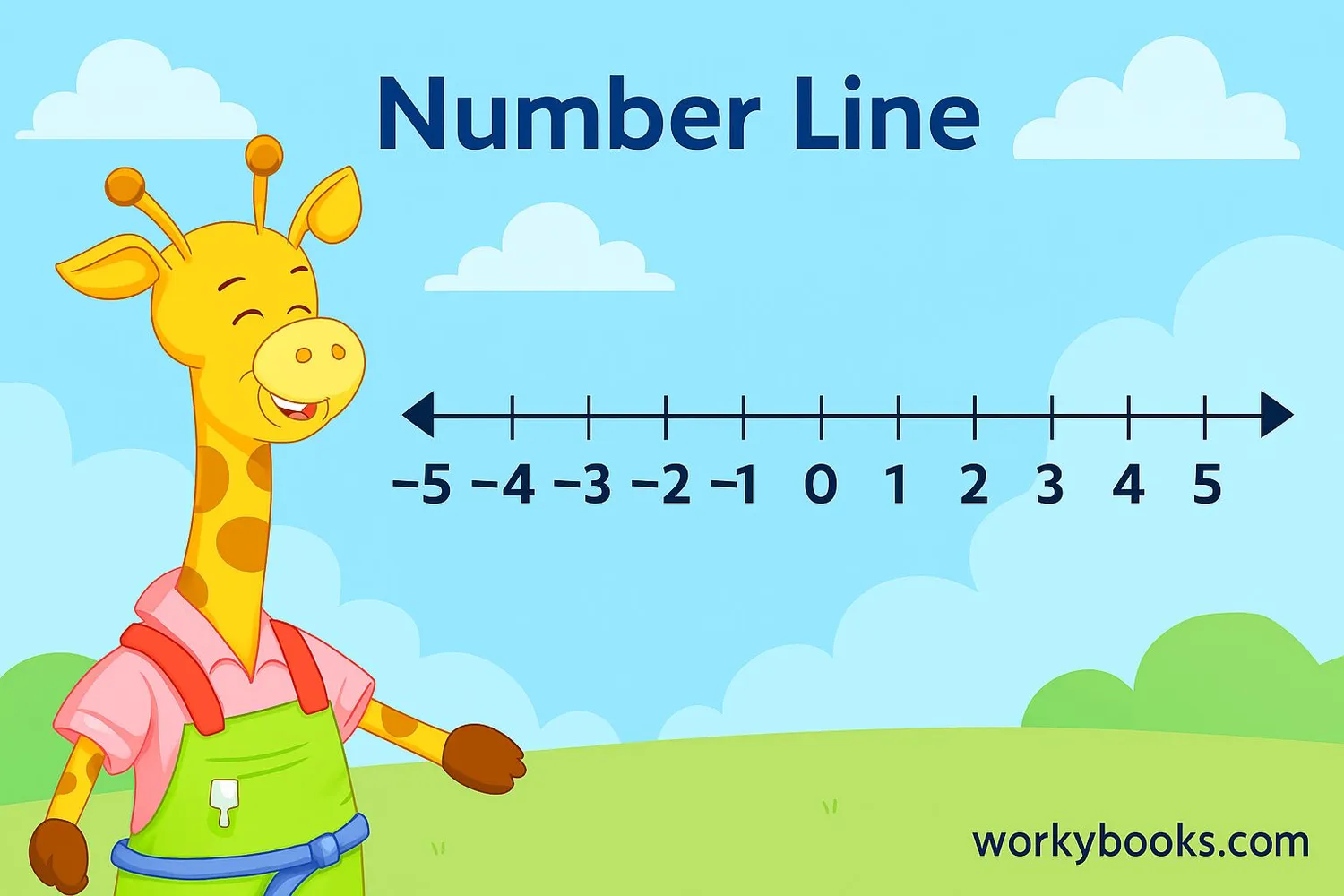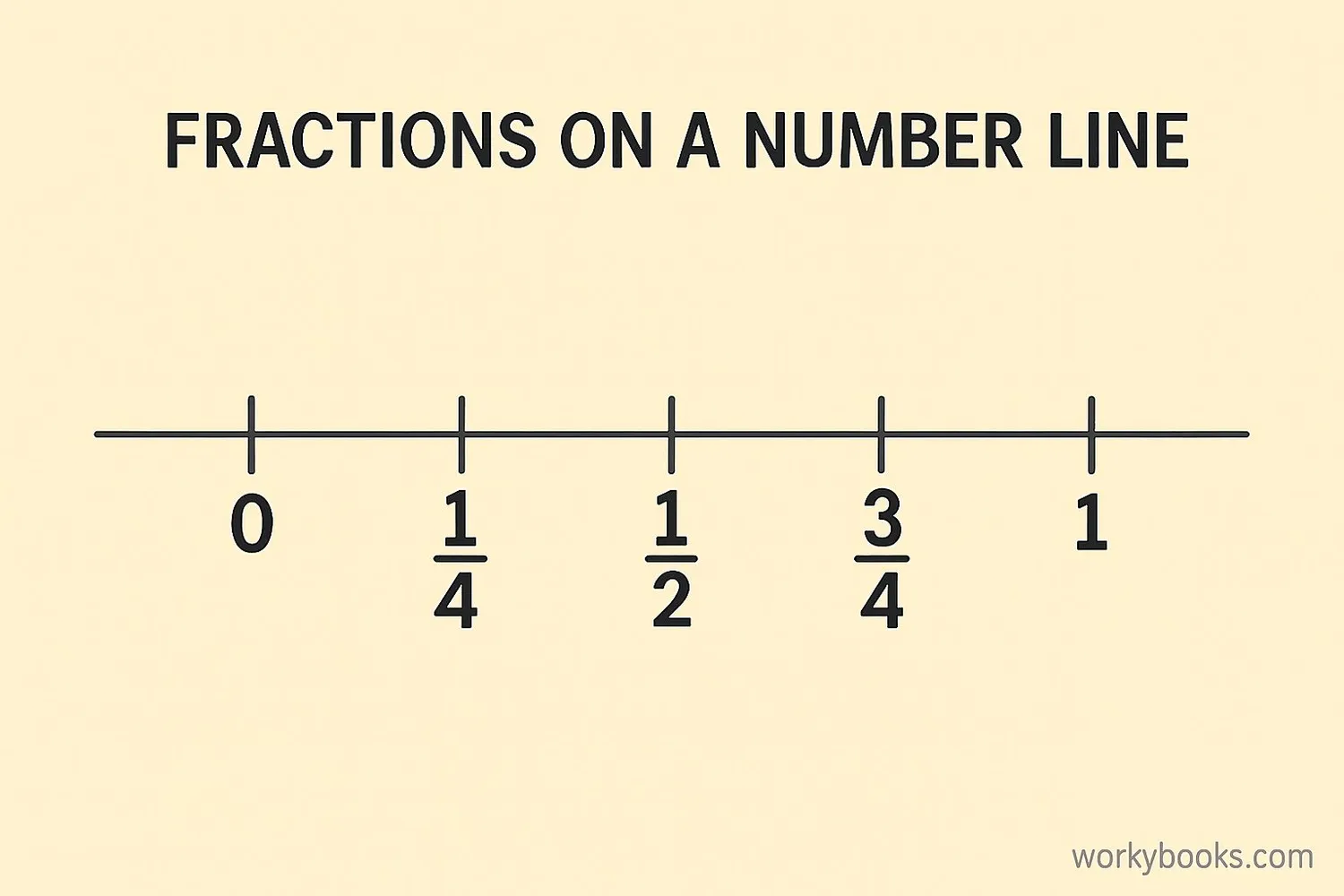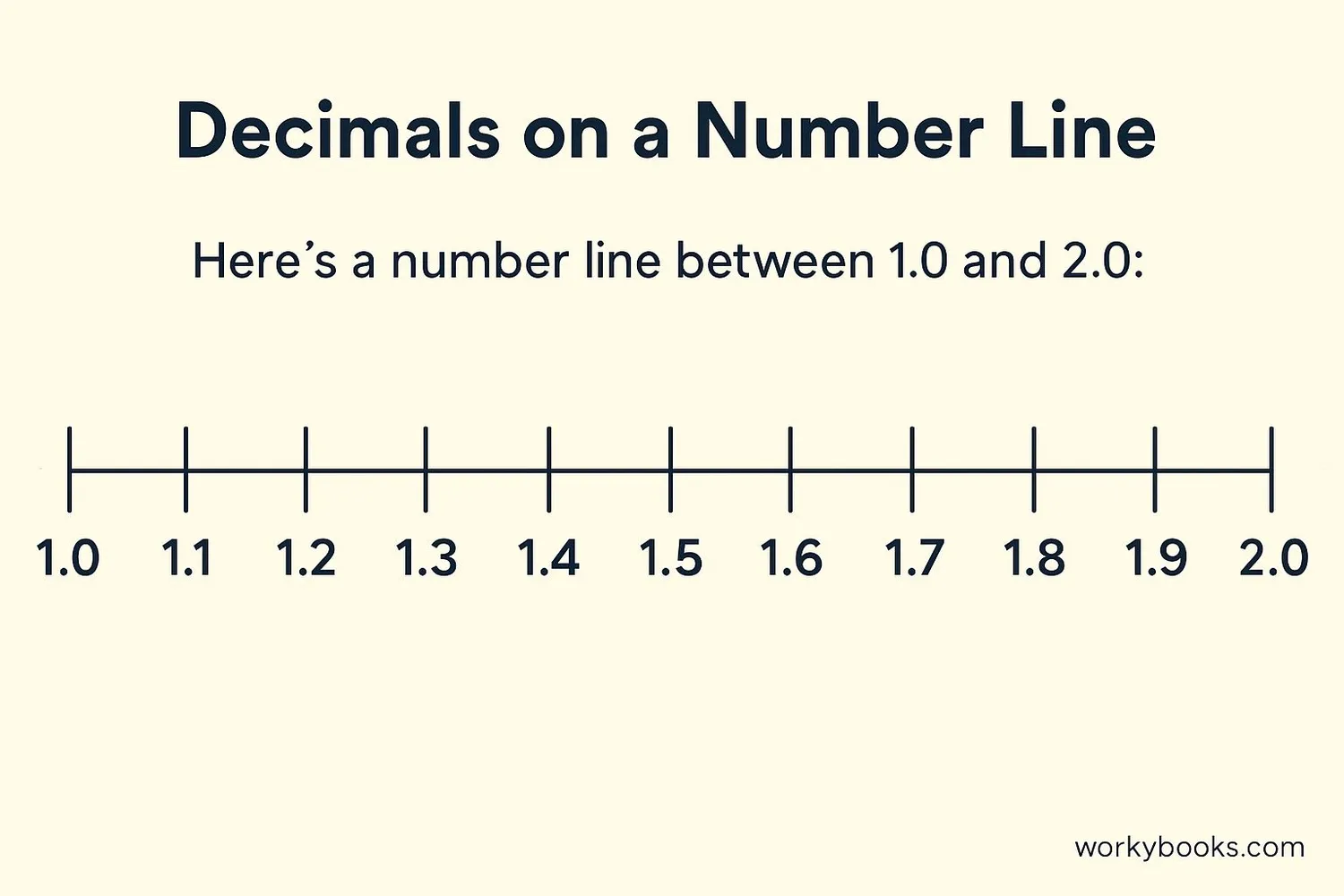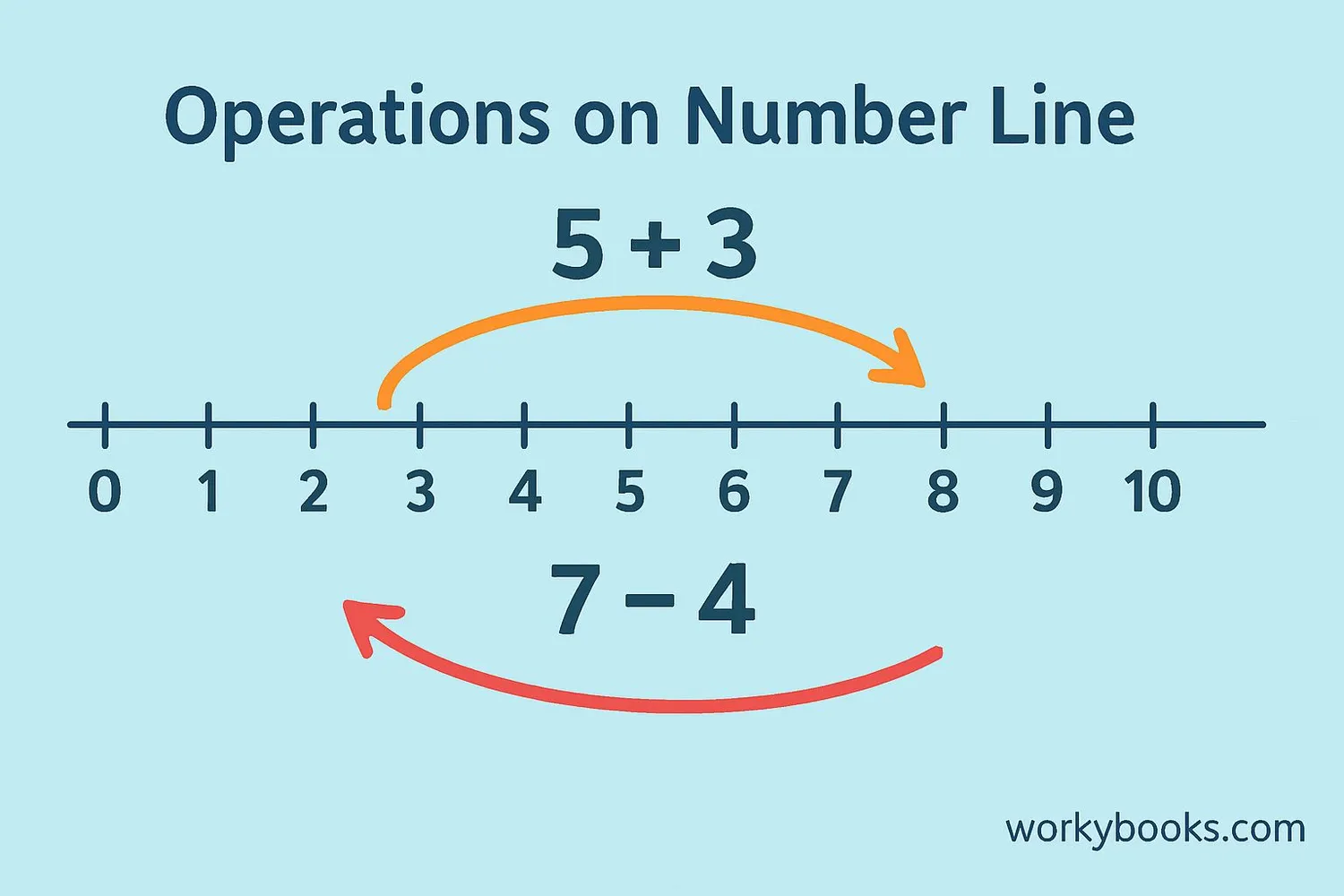Number Lines - Definition, Examples, Quiz, FAQ, Trivia
Learn how number lines help us understand numbers and solve math problems
What is a Number Line?
A number line is a straight line with numbers placed at equal intervals along its length. It helps us visualize and understand numbers, their order, and relationships between them.
Key features of a number line:
- Numbers increase as we move to the right
- Numbers decrease as we move to the left
- Zero is usually at the center
- Equally spaced marks show number positions
- Counting and ordering numbers
- Understanding positive and negative numbers
- Visualizing fractions and decimals
- Solving addition and subtraction problems
Key Concept
A number line is like a ruler for numbers that helps us see how numbers relate to each other.
Integers on a Number Line

Integers are whole numbers and their opposites. On a number line:
- Positive integers are to the right of zero
- Negative integers are to the left of zero
- Numbers increase as we move right
- Numbers decrease as we move left
- Understand that -3 is less than -1
- See that 4 is greater than -2
- Visualize how far numbers are from zero
- Compare numbers more easily
Remember
On a number line, any number to the left is smaller than any number to the right.
Fractions on a Number Line

Fractions represent parts of a whole. On a number line:
- The space between 0 and 1 is divided into equal parts
- Each part represents a fraction of the whole
- Fractions with larger denominators have smaller spaces between them
- Understand that 1/2 is the same as 2/4
- See that 3/4 is greater than 1/2
- Add and subtract fractions visually
- Compare different fractions
Fraction Tip
To place 3/5 on a number line, divide the space between 0 and 1 into 5 equal parts, then count 3 parts from zero.
Decimals on a Number Line

Decimals are another way to represent fractions. On a number line:
- Each whole number is divided into 10 equal parts for tenths
- Each tenth can be divided into 10 equal parts for hundredths
- Decimal points separate whole numbers from fractional parts
- Understand that 0.5 is the same as 1/2
- See that 0.75 is greater than 0.7
- Add and subtract decimals visually
- Compare different decimals
Decimal Tip
To place 2.35 on a number line, first find 2.3, then divide the space to 2.4 into 10 parts and place it at the fifth mark.
Operations on a Number Line

Number lines are excellent tools for performing basic math operations:
Addition
To add numbers on a number line:
- Start at the first number
- Move right the number of spaces equal to the second number
- Where you land is the sum
Subtraction
To subtract numbers on a number line:
- Start at the first number
- Move left the number of spaces equal to the second number
- Where you land is the difference
Multiplication
To multiply on a number line:
- Start at zero
- Make equal jumps for each group
- Where you land is the product
Division
To divide on a number line:
- Start at the dividend
- Make equal jumps backward to zero
- The number of jumps is the quotient
Operation Tip
When adding or subtracting, moving right increases the number, while moving left decreases it.
Number Line Quiz
Test your understanding of number lines with this 5-question quiz:
Frequently Asked Questions
Here are answers to common questions about number lines:
Number Line Trivia
Discover interesting facts about number lines and numbers:
Ancient Number Lines
The earliest known number lines date back to ancient Egypt around 1650 BC. Egyptians used marked ropes to measure fields after Nile floods.
Infinite Directions
Number lines extend infinitely in both directions. No matter how large a number you can imagine, there's always a larger number further to the right!
Temperature Scales
Thermometers are vertical number lines. The Celsius scale has 0 at water's freezing point and 100 at boiling, while Fahrenheit uses different reference points.
Ruler as Number Line
A ruler is a physical number line we use every day. It shows both whole numbers and fractions to help us measure objects accurately.





